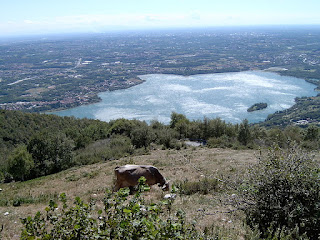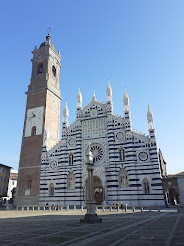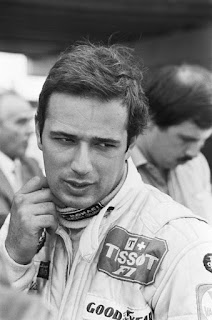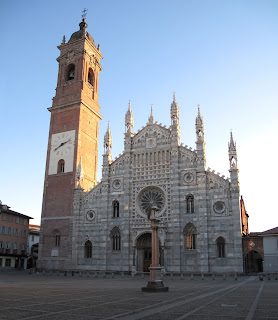Double GP2 champion’s track career ended in frustration
.jpg) |
| Valsecchi was tipped by many for a career in Formula One |
Valsecchi was twice a champion in GP2, the category just below F1, but despite stints as a test driver and reserve driver for Lotus on the main Grand Prix circuit was never given a chance to compete at the top level.
Frustrated because he thought he deserved an opportunity, Valsecchi quit the sport but soon forged a career in television coverage of F1, first as an analyst and then as a commentator, becoming a popular figure with viewers for his excitable style.
He also co-presents the Italian version of the hit British car show, Top Gear.
Valsecchi made his debut in the Formula Renault and Formula 3 classes as young as 16, making his Formula 3 debut the same year, although it was not until 2007, having stepped up to Formula Renault 3500, that he celebrated his first race victory.
That came at the Nürburgring in Germany, where he won the second of the two rounds on the same weekend. The other was won by a future four-times F1 world champion, Sebastian Vettel. |
| Valsecchi pictured in a Team Lotus Renault in practice for the Malaysian Grand Prix. |
His breakthrough came after joining iSport International, a British team, for the 2009–10 GP2 Asia Series, which he won, with three races to spare, after achieving three wins and two second places in the first five races of the season. In the main GP2 series in 2010, victory in the final race of the season enabled him to take eighth in the drivers' championship, his best performance so far.
Valsecchi could not improve on that eighth pace in 2011 but the following season, when 2011 GP2 champion Romain Grosjean stepped up to F1 with Lotus, it was to Valsecchi that Grosjean’s DAMS team turned for a replacement.
He did not let them down, establishing an early championship lead by winning three out of the four races held across two weekends in Bahrain and producing a strong end to the campaign, winning at Monza in his home round of the series to see off rival Luiz Razia and take the title by a 22-point margin.
.jpg) |
| Valsecchi is noted for his exuberant presenting style |
Having already done some test driving for Lotus at the end of the 2011 season, Valsecchi was hopeful his career would now follow a similar trajectory. Those hopes rose still more after the conclusion of the GP2 series, when he topped the standings in the F1 Young Driver test. The following March, he and Grosjean shared duties for Lotus at the preseason test sessions in Barcelona.
Yet as the 2013 season proper unfolded, he was unable to displace Grosjean as the number two Lotus driver despite his Swiss-born rival’s erratic form. Later, when No 1 Kimi Räikkönen had to drop out to undergo back surgery, instead of promoting Grosjean and giving Valsecchi the second car, Lotus turned instead to Heikki Kovalainen, telling Valsecchi he was too inexperienced.
Having made his feelings clear on the snub, Valsecchi was not offered anything in 2014 and his F1 career was effectively over before it had begun.
It was not the end of his association with the sport, however. After landing a job as a race analyst with Sky Sport Italia for their F1 coverage, he was invited to provide colour commentary in 2017 for the international feed of the newly-formed FIA Formula 2 Championship.
His enthusiastic and passionate commentary style immediately gained him a following and today he fronts Sky Sport Italia F1 coverage alongside co-presenter Federica Masolin.
Since 2016, he has hosted Top Gear Italia on the Sky Uno channel, teaming up with Sky Sport Italia’s Moto GP commentator Guido Meda and Joe Bastianich, an American restaurateur who was previously a judge on the Italian version of Masterchef.
 |
| A view across Lake Pusiano taken from the upper slopes of Monte Cornizzolo |
Eupilio, where Valsecchi was born and still lives, lies on the slopes of Monte Cornizzolo, between the small Segrino and Pusiano lakes of Lombardy, about midway between Como to the west and Lecco to the east. It is a municipality that has existed since 1927, when the villages of Penzano, Carella and Mariaga were merged to form one place. The name is thought to have its origins in Historia naturalis, the study of natural history by Pliny the Elder written in around 77AD, in which he described a ‘Eupilis Lacus’, taken to be the stretch of water today known as Lake Pusiano, which the area overlooks. The calming peace of the lake is said to influence the slow, rarefied pace of life in the villages around it. Eupilio has only 2,600 residents yet has five churches built between the 13th and 16th centuries. The area is thought to have been inhabited since approximately 3000BC. Situated about 18km (11 miles) east of Como and 14km (9 miles) west of Lecco, the landscape to the south is the northern edge of the gently hilly Brianza region, while to the north, beyond Lake Segrino, are the first steep slopes of the Pre-Alps. It is an area popular with walkers.
 |
| The Duomo at Monza, home of the fabled Iron Crown |
The city of Monza is famous for its Grand Prix motor racing circuit, where Valsecchio numbered two important victories in his career. The city is also home to the Iron Crown of Lombardy - the Corona Ferrea - a circlet of gold with a central iron band, which according to legend, was beaten out of a nail from Christ’s true cross and was found by Saint Helena in the Holy Land. The crown is believed to have been given to the city of Monza in the sixth century and is kept in a chapel in the 13th century Basilica of San Giovanni Battista, the city’s cathedral. When Napoleon Bonaparte was declared King of Italy in 1805, he was crowned in the Duomo in Milan and the Iron Crown had to be fetched from Monza before the ceremony. During his coronation, Napoleon is reported to have picked up the precious relic, announced that God had given it to him, and placed it on his own head.
Also on this day:
41: The assassination of Roman emperor Caligula
1444: The birth of Galeazzo Maria Sforza, Duke of Milan
1705: The birth of castrato opera star Farinelli
1916: The birth of actor and writer Arnaldo Foà
1947: The birth of footballer Giorgio Chinaglia




